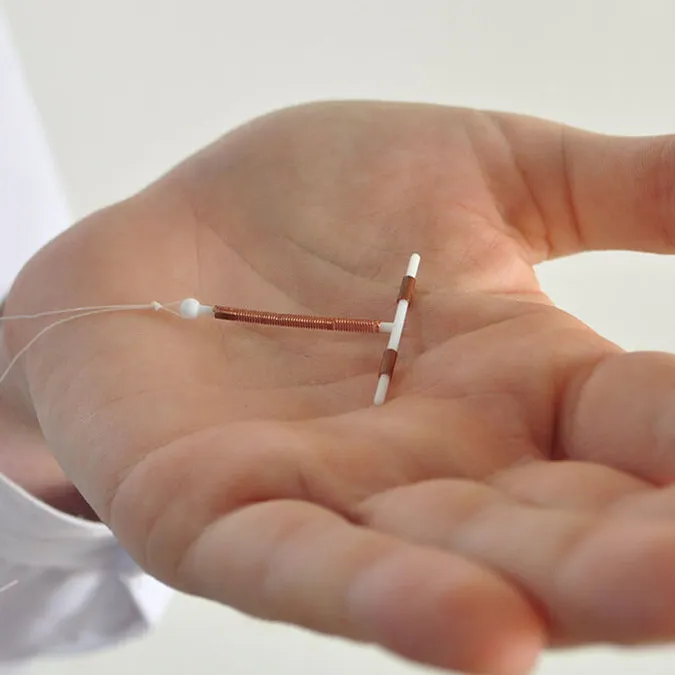
Published on: 10 October, 2022
Read Time: 4 min
There are over fifteen different types of birth control options. Although the most commonly used form is the pill, it’s not always the most convenient. Depending on your circumstances, an Intrauterine Device (IUD) might actually be a better choice.
What is an IUD?
An IUD is a small, t-shaped device that is placed into the uterus and provides protection from unwanted pregnancy for 3-10 years. IUDs are 99% effective at stopping pregnancy and once the IUD has been inserted, that’s it. No other steps for contraception need to be taken.
What are the benefits of an IUD?
IUD’s have a number of benefits such as those listed below:
- Ease of use – An IUD insertion can be done at your doctor’s office or any sexual health clinic. After insertion, you do not have to do anything else to prevent pregnancy. No follow-up appointments need to be scheduled and no other medication needs to be taken. The IUD can be left in place for the next 3-10 years without issue. The duration of time your IUD will last depends on the type of IUD inserted (see below).
- Reversibility – The IUD can be removed at any time and pregnancy may happen quickly after. If you decide to remove the IUD for any reason, be assured that pregnancy can happen soon after.
- Effectiveness – An IUD is one of the most effective forms of birth control. It is 99% effective at preventing pregnancy. In the very few instances where an IUD has not worked this is because the IUD is pushed out of (expelled from) the uterus unnoticed.
- Less painful menstrual cramps and bleeding – The hormonal IUD can reduce cramping, bleeding and the pain of menstrual cramps.
Types of IUDs
There are two types of IUD’s, hormonal IUDs and copper IUDs.
- Hormonal IUDs
In addition to preventing unwanted pregnancy, hormonal IUD’s such as Mirena can also reduce heavy menstrual bleeding and cramps. If taken long enough, periods can stop all together. - Copper IUDs
There is only one brand of copper IUD in the U.S., the Paragard IUD which can last for up to 10 years. Copper IUDs are hormone free. This makes them a good option for women who prefer non-hormonal birth control, or those who can’t use methods with hormones because of medical reasons.
Who should use an IUD?
IUDs are an option for any woman looking for contraception.
However, those who fall under one of the following categories may find a particular benefit to using an IUD versus other contraceptive methods
- Those looking for long-term contraception -If you have no plans to start a family in the next few years, an IUD can be the most cost-effective and easy-to-use option to consider.
- If you have difficulty using other forms of contraception. For example, if you routinely forget to take the pill or have experienced bad side effects when using other contraceptives, an IUD should be considered
What are the risks?
Risks of using an IUD include
- Menstrual problems
Although the hormonal IUD can reduce menstrual cramps and bleeding, the copper IUD may increase menstrual bleeding or cramps. - Perforation
In 1 out of 1,000 women, the IUD will get stuck in or puncture (perforate) the uterus. Perforation is rare, but when it occurs, it’s almost always during insertion. The IUD should be removed if the uterus has been perforated. - Expulsion
About 2 to 10 out of 100 IUDs are pushed out (expelled) from the uterus into the vagina during the first year. This usually happens in the first few months of use. If you think your IUD has been expelled, use a backup birth control method until you can see a health care provider.
When considering which birth control option to use, women have a wide range of options to choose from. For many reasons, IUD’s can be a great option for some women to consider.
References
- https://www.mayoclinic.org/tests-procedures/mirena/about/pac-20391354
- https://www.cdc.gov/reproductivehealth/contraception/index.htm
- Grimes DA (2007). Intrauterine devices (IUDs). In RA Hatcher et al., eds., Contraceptive Technology, 19th ed., pp. 117–143. New York: Ardent Media.





